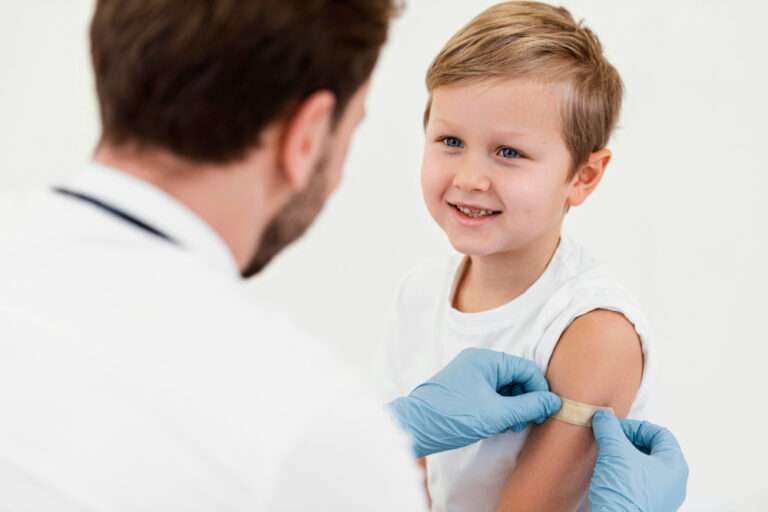Common environmental allergies
Environmental allergies in children are common and can cause a range of symptoms when exposed to allergens in the environment. Some of the most common environmental allergens in children include:
- Pollen Allergies (Hay Fever or Allergic Rhinitis):
- Tree pollen (spring)
- Grass pollen (late spring and summer)
- Weed pollen (late summer and fall)
- Dust Mite Allergy: Dust mites are tiny, microscopic bugs that thrive in bedding, carpets, and upholstered furniture.
- Mold Allergy: Mold spores can be found both indoors and outdoors, with indoor mold often a concern in damp or poorly ventilated areas.
- Pet Allergies: Children can be allergic to proteins found in the skin cells, saliva, and urine of cats, dogs, and other animals.
- Cockroach Allergy: Exposure to cockroach droppings and body parts can trigger allergies in some children, especially in urban areas.
- Allergies to Insect Stings: Insects like bees, wasps, hornets, and fire ants can cause allergic reactions when they sting a child who is allergic to their venom.
- Allergies to Indoor Irritants:
- Tobacco smoke
- Strong odors and fumes
- Household cleaning products
- Perfumes and scented products
- Allergies to Pollutants: Air pollution, such as particulate matter and ozone, can exacerbate respiratory symptoms in children with allergies.
- Latex Allergy: Some children are allergic to natural rubber latex, which is found in many everyday items like balloons, rubber gloves, and some medical supplies.
Symptoms of environmental allergies in children can vary but often include:
- Sneezing
- Runny or stuffy nose
- Itchy or watery eyes
- Coughing
- Wheezing or difficulty breathing
- Skin rashes (eczema or hives)
- Swelling of the face or other body parts
- Gastrointestinal symptoms (less common)
If you suspect your child has environmental allergies, it’s important to seek evaluation and treatment from a healthcare professional, typically an allergist or immunologist. They can perform allergy tests, such as skin prick tests or blood tests, to identify specific allergens triggering your child’s symptoms.
Treatment options for environmental allergies in children may include:
- Allergen Avoidance: Reducing exposure to allergens is often the first line of defense. This may involve measures like using air purifiers, encasing mattresses and pillows, and keeping windows closed during high pollen seasons.
- Medications: Over-the-counter or prescription antihistamines, decongestants, nasal corticosteroids, and eye drops can help alleviate allergy symptoms.
- Allergen Immunotherapy (Allergy Shots or Sublingual Immunotherapy): In some cases, especially when allergies are severe or difficult to control with medications, allergen immunotherapy may be recommended to desensitize the child to specific allergens over time.
- Lifestyle Modifications: Identifying and avoiding triggers, such as pet dander or cigarette smoke, can help manage symptoms.
- Emergency Medications: Children with severe allergies may be prescribed epinephrine auto-injectors (e.g., EpiPen) to use in case of severe allergic reactions (anaphylaxis).
Consult with a healthcare provider or allergist for a proper diagnosis and personalized treatment plan for your child’s environmental allergies.
------------From our Sponsors------------









